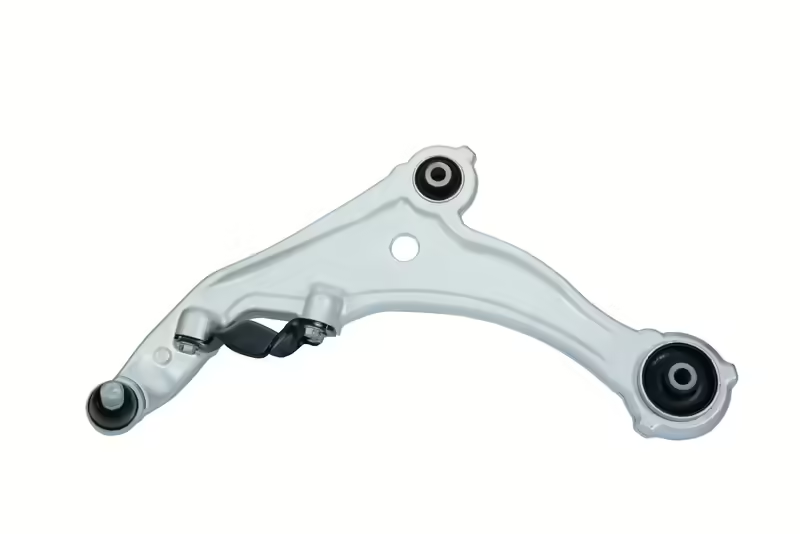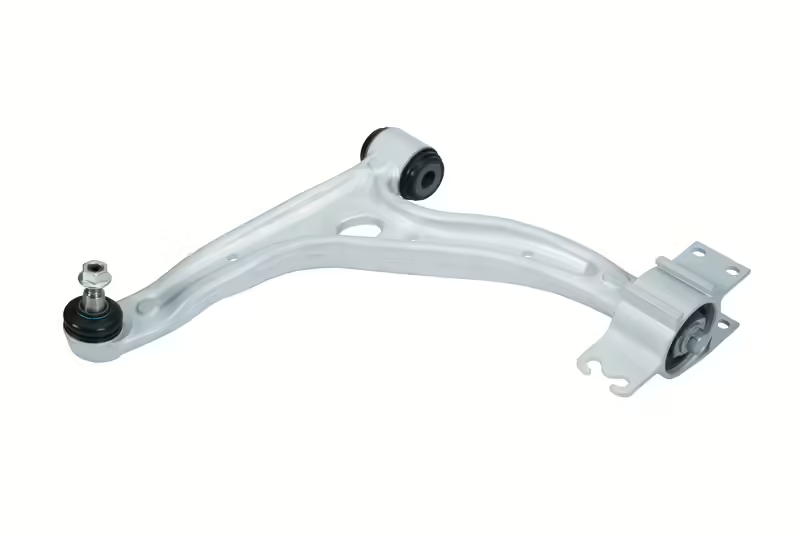The MacPherson strut suspension is a widely used automotive suspension design known for its simple structure, cost-effectiveness, and performance. This article delves into its design principles, component functions and vehicle dynamics to highlight its unique features, advantages, and disadvantages. Hold onto your seats, because we’re about to take a thrilling ride through the world of MacPherson suspension!
What Makes the MacPherson Strut Suspension So Widely Used?
To unleash the maximum performance and comfort of a car, the most crucial aspect is the contact area between the tires and the road surface. If the tires cannot closely adhere to the road surface, even with a thousand horsepower or a luxury leather interior, they would be rendered useless. Therefore, automotive engineers have developed various suspension systems to achieve this goal.
However, when engineers design suspension systems, they have to confront another reality, which is “cost.” So, is there a suspension system that can provide handling and comfort close to a multi-link suspension, exhibit non-independent suspension spatial performance, and still maintain a low cost?
The answer is MacPherson strut suspension. In the realm of suspension systems, the MacPherson suspension stands out because of its simple structure, cost-effectiveness, and performance close to that of a multi-link setup. Currently, in the passenger car domain, approximately 80% of vehicles use “MacPherson suspension” on the front axle.
The Origin and Basic Structure of the MacPherson Strut Suspension
The name “MacPherson suspension system” originates from its application on a Ford car in 1948. However, in reality, this suspension design had already existed before that time.
The MacPherson suspension is a unique type of suspension. Typically, the steering function is achieved using control arms or links as pivot points. However, the MacPherson suspension directly incorporates the shock absorber assembly as part of the steering system.
The specific form involves the upper end of the strut (shock absorber assembly) connecting to the vehicle frame through the shock absorber upper mount. The upper mount contains rubber components to absorb vibrations and bearing components that enable it to rotate with the steering knuckle. The lower end is typically fixed to the steering knuckle by two screws.
This design allows forces acting on the vehicle body to be transmitted to the tire through the spring, damping, and steering knuckle. Below the steering knuckle, the steering is achieved through the ball joint structure of the control arm, while the other end of the control arm connects to the vehicle body through a rubber bushing, providing vertical movement and shock absorption.
What are the Advantages of a MacPherson Strut?
Space Performance :
In today’s automotive landscape, with changing consumer habits, increased safety awareness, and rising space requirements, manufacturers often need more space in the engine compartment. Compared to double wishbone suspension, the absence of an upper control arm allows for more space in the engine compartment.
Lighter Unsprung Mass :
Fewer components result in a lighter weight, achieving improved handling and fuel efficiency.
Cost :
Compared to other independent suspension systems, the reduced number of components helps effectively lower costs.
Read more: Components of Suspension System: What are the Functions?
What are the Disadvantages of a MacPherson Strut?
Poor Cornering Performance :
To achieve higher cornering limits, one crucial factor is the tire’s contact area with the ground. Maximizing the tire contact area is necessary for reaching higher limits. However, due to the inherent structural design of the MacPherson strut suspension, positive camber* occurs during steering, leading to a reduction in tire contact area and consequently resulting in poor cornering performance.
Instability During Turning :
Due to the shock absorber assembly serving as a strut, lateral forces during vehicle turns. These forces cause the shock absorber assembly to bend, resulting in instability. (This is also why some models add strut bars in the engine compartment.)
*Positive camber: In the MacPherson strut suspension, during compression, the lower control arm and the upper shock absorber mount move together. When the vehicle’s suspension compresses, the lower control arm follows an arc, but the upper point remains fixed, leading to positive camber. The only solution to address this issue is to set negative camber during alignment to compensate for the positive camber during cornering. However, excessive negative camber can introduce a series of problems, such as increased tire wear and other issues.
Evolving the MacPherson Strut Suspension: Variants and Innovations
MacPherson strut suspension boasts a cost advantage, prompting almost all automotive manufacturers to widely adopt this suspension system. However, to address the comparatively poorer handling characteristics, manufacturers have employed various MacPherson suspension variants to make improvements.
1. MacPherson Strut with Decomposed Arm
The original “A”-shaped Lower Control Arm, connected to the steering knuckle, is replaced by two “I”-shaped control arms*. Each end of the two “I”-shaped control arms is equipped with a ball joint, connecting to the steering knuckle. The term “double-joint” is derived from this configuration. Additionally, other components remain similar to the MacPherson suspension, essentially maintaining the strut-type suspension system.
* “I”-shaped control arm: This type of control arm is sometimes referred to as a “link.”
2.Double Pivot Steering Knuckle
As mentioned several times before, the MacPherson strut suspension relies on the upper part of the strut assembly as a KPI point, which often limits control at various angles. This configuration involves splitting the lower end of the strut assembly into two connection points. One connection point links to the upper part of the steering knuckle, while the other connects to the lower part of the steering knuckle. This approach aims to redefine the endpoint of the KPI, providing a similar motion to a double A-arm suspension.
3.Control Arms and Caster Arm
The control arm is replaced with two “I”-shaped control arms, with one control arm adopting a similar approach to the separated type. The other control arm is fixed at one end to the first control arm, while the other end is oriented towards the rear of the vehicle and secured to the frame. By adjusting the length of this caster arm, the caster angle can be modified.
Which Cars Use MacPherson Suspension?
As the most widely adopted front suspension system globally, the MacPherson strut suspension is utilized by numerous automotive manufacturers. Its presence can be observed in entry-level vehicles to high-end sports cars. Below is a list of some vehicles that employ the MacPherson suspension for reference.
- BMW 1 SERIES(F40)
- CITREON C4 (C41)
- M-BENZ A-CLASS (W177)
- NISSAN SENTRA (B18)
- PORSCHE 911 (991)
- TOYOTA COROLLA (E170)
- NISSAN SENTRA (B18)
Pictures above are the control arms for Nissan and Mercedes; a standard Macpherson strut type. Since Nissan is a non-luxury brand and Maxima is a mid size sedan, it make sense for Nissan to choose Macpherson as a suspension design. In the other hand, Mercedes is considered as luxury automaker, but A class and B class are the entry level for Mercedes (MSRP around 33,000 USD). Therefore it is also understandable for Mercedes to use Macpherson strut in those models.
Conclusion
In summary, the MacPherson suspension system is widely adopted due to its simple structure, minimal space requirements, and cost-effectiveness. It offers satisfactory handling performance and can be improved through various methods. From small to midsize cars, and even in luxury brands, the MacPherson strut suspension has become one of the most common suspension forms today.
References
- Chassis Handbook Bernd Heißing, Metin Ersoy (2010)
- 自動車のサスペンション KYB株式会社 (2013)
- 車両運動性能とシャシーメカニズム 宇野高明 (2022)
- サスチューニングの理論と実際 野崎博路(2008)
- Official Websites of Major Automobile Brands
- T.G.Q
Related articles:
Aluminum Control Arms: What are the Features and Benefits?
6 Symptoms of Bad Control Arm: Causes, Prevention & Solutions
What is Multilink Suspension? Mechanics, Benefits & Drawbacks


